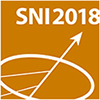Speaker
Description
Fragment-based lead discovery has become increasingly popular to identify first leads for drug development. Advantage of using fragments is their low molecular weight, which leaves sufficient space for subsequent chemical optimization before the pharmaceutically reasonable limit of 500 g/mol is reached. However, the inherent low-binding affinity of fragments poses major challenge to current biophysical and biochemical screening methods and questions whether such techniques can be used as pre-screening filter to reliably detect all putative fragments subsequently to be crystallized with the target protein. Since data collection at synchrotrons has become fast enough, we favor direct fragment screening on protein crystals. We designed a 1270-entry fragment library and tested parts of it against seven different proteins with a mean hit rate of 17%. However, how to optimize weak initial fragment binders to putative drug leads? We developed several design tools to search for analogs, finding larger ligands embedding to original core fragment or allowing a tailored docking of putative side chains to the initial core fragments. Since natural compounds are claimed to be better starting points for drug development, we used the AnalytiCon FRGx fragment collection to discover hits by crystallography. Subsequently, we identified by docking putative lead candidates that embed the core fragment into a larger scaffold available in the 30,000 entry NATx database of natural compounds.

